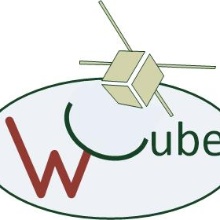Development of a CubeSat beacon for the investigation of atmospheric influences on W-band signals as part of the ESA Telecomm Artes 4.0 programs.
The ILH work package includes the investigation of atmospheric attenuation in the W-band and the distinction between different propagation effects.
In June 2021, the nanosatellite "W-Cube" began its journey aboard a Falcon 9 rocket from Cape Canaveral, USA, to the polar orbit. Approximately one month later, it was placed into a 500-kilometer-high orbit and has been successfully transmitting test signals in the Q- and W-Band back to Earth since August 2021. During this process, it is collecting crucial data for exploring new frequency ranges for future satellite communication systems.
The demand for data transmission capacity is continuously increasing. Worldwide, extensive research is being conducted on new data highways for digital consumption, as the current frequency bands are already becoming scarce. To successfully connect new high-performance satellites to the internet in the future, several European partners are collaborating within the "ARTES – Advanced Technology CubeSat-based W-band channel measurements" project. The goal is to test previously unused frequencies in the Q- and W-Band (at 37.5 and 75 GHz). This project represents the world's first "Low Earth Orbit (LEO) Mission" in this frequency range.
Meanwhile, new ground stations for the W-Band are being developed across Europe. Besides the W-Band ground station in Graz, Austria, a copy of this station is planned in Finland. Additionally, a "Components-of-the-Shelf (COTS)" ground station is being developed and is already operational at ESA, ESTEC (further details available here), and ILH is working on a different ground station architecture for the W-Band within the framework of the EIVE project.
The Project Consortium
The development of "W-Cube" took place as part of the collaborative project "ARTES – Advanced Technology CubeSat-based W-band channel measurements." The project consortium consists of the following organizations: JOANNEUM RESEARCH, leading the project, Fraunhofer IAF, LC Technologies (LCT), Millimetre Wave Laboratory of Finland (MilliLab), Reactor Space Lab Oy (RSL), University of Stuttgart (ILH), and Katholieke Universiteit Leuven. During the first two successfully completed project phases, the nanosatellite and a corresponding ground station were designed and constructed. These are now collecting data from a low Earth orbit (LEO) in the third project phase to explore the Q- and W-Bands.
The project is funded by the European Space Agency (ESA) and financially supported by the participating countries: Austria, Finland, Portugal, and Germany. The German contribution to the project is supported by the German Aerospace Center (DLR).
Publications
-
S. Jussi et al., “First results from the W-CUBE mission: CubeSat-based characterization of wave propagation of W-band and Q-band signals,” presented at the 1st Space Microwave Week, 2023, pp. 1–6.
-
J. Flavio, M. Schmidt, E. Greschitz, K. Plimon, L. Manoliu, and I. Kallfass, First Results of the W and Q-band Beacon Measurements with a LEO CubeSat. Ka and Broadband Conference, Stresa, Italy, 2022.

Benjamin Schoch
M.Sc.Research Assistant

Laura Manoliu
M.Sc.Research Assistant



